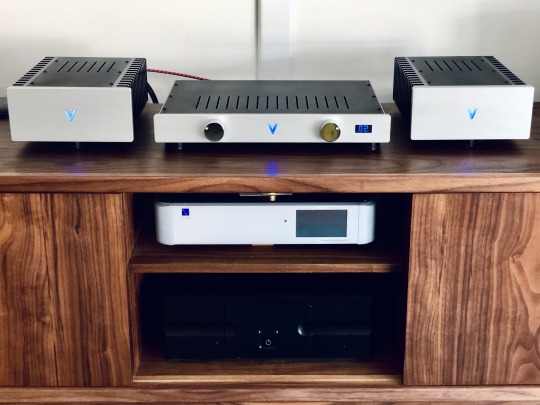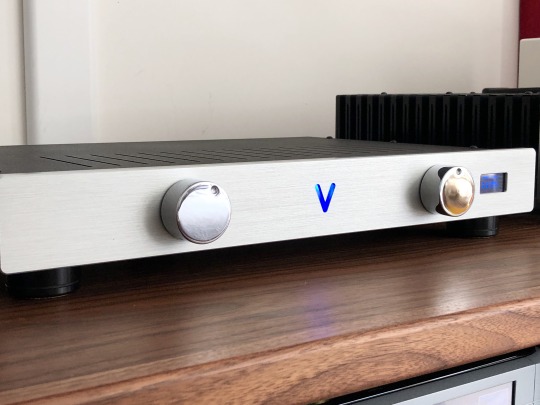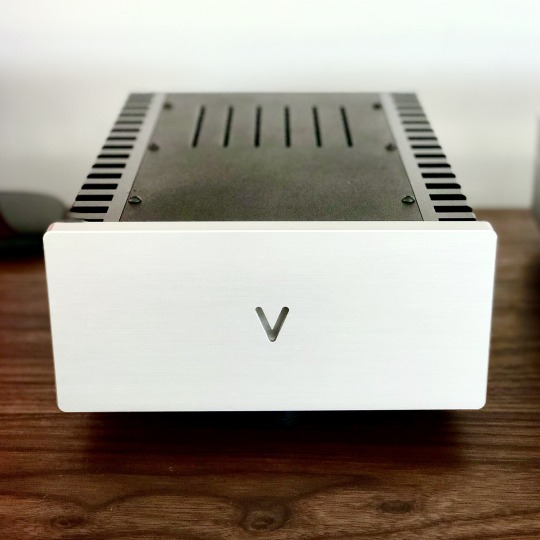#I want something sleek and fairly smooth and relatively light that I can spin with
Text
10 minutes left before I turn a year older and what did I do?
I ordered myself a lightsaber. ah yiss
#about me#2024 mood#Batuu Bounding#I've been planning on doing Savi's on our Batuu trip but I'm just not feeling the saber hilts themselves#I want something sleek and fairly smooth and relatively light that I can spin with#that is so not what's going on with the Savi's sabers#so just as we're getting down to the wire here I thought why not look online and see what's out there that more matches my vision#and I found one on Amazon. that can arrive on Sunday. that checks all the boxes of what I was looking for#and it's like. a quarter the price of Savi's#I have heard only wonderful things about the Savi's *experience* but mixed things on the sabers themselves#when I started out on this plan to Batuu-bound for my birthday Savi's sounded like a fun addition to the day#but since then I've come up with a whole Star Wars character with a backstory and a personality and a LIFE#and Savi's is not her path. absolute respect and love to everyone (including my family members) for whom Savi's was the right choice#but I am E X C I T E about the saber I picked out#not sure if I'll take the blade to Disney with me but I'm going to try to rig up the hilt to attach to my belt at least#see kids? getting older is really just about being able to buy yourself the toys you wanted as a kid#with no one to tell you no#and if you're lucky a supportive spouse who yells DO IT! when you doublecheck your instincts lol#hey one minute to go until b i r t h d a y
7 notes
·
View notes
Text
First Take Review: Valvet Soulshine Preamplifier & A4 Mk.II Amplifier

I stumbled upon the Valvet brand fairly randomly. Looking back at my original email to Alfred Kainz of highend-electronics, Valvet’s US distributor, it appears I caught wind of the niche German marque via a review of their E2 amplifier ($2,990) on 10audio.com. In it, Jerry Siegel compared it with some very well-respected solid state and tube competition - Pass, First Watt, Cary - and came away smitten with the musicality of the little 20-watter. I perused the rest of the Valvet line and was immediately drawn to how it blended sleek, unassuming styling with a focus on tried and true design approaches. Tube preamps with solid state amps (no Class D in sight), super quality passive parts, minimalist Class A and single-ended topologies, all in urban-lifestyle friendly packaging... Valvet was speaking my language. The relative obscurity of the brand (at least here in the States) and lack of online reviews only added to the intrigue. A review was clearly in order, and Alfred was kind enough to oblige us with the Soulshine tube preamp ($5,890 in the configuration we received) and A4 Mk.II monoblock amplifier ($7,890).
Alfred provided this description of the company:
Valvet is located in Bargteheide, in the north of Germany, near Hamburg. What we have here is a very consistent vision by designer Knut Cornils in design and execution. Knut founded the company in 1991 and has been building Class-A amps since 1982. Knut has evolved a distinctive architecture of Class-A modules using high-quality components in minimal designs, featuring valve pre-amplifiers with separate power supply and solid-state mono-block power amplifiers.
Valvet Soulshine Tube Preamp ($5,890)

The Soulshine is Valvet’s top preamplifier line and comes in a number of configurations. The model we received is a line stage and includes a compact external power supply and stepped attenuator with remote control. Recently, two further upgrades became available: the Soulshine IIz ($8,890) featuring a dual-mono external supply, and the Soulshine Trio ($10,990) with built-in phono stage and quad supplies. @mgd-taww has the full review of our base configuration coming out imminently, but I'll share some observations from my time with the unit.
I really dug the sleek look of the Soulshine - super slender, with a minimalist front panel sporting two polished chrome knobs, a 2-digit volume display and the Valvet "V" softly glowing in blue. There's zero panel markings, which makes input selection a bit of a guessing game, and slightly odd is the fact that the free-spinning volume knob (it's a rotary encoder for the electronically-controlled attenuator) has a dimple to indicate position, despite it being completely uncorrelated with the actual volume setting. The attenuator itself works extremely well - volume control is a bit on the coarser side, definitely not 1dB across the range, but adjustments are quick, smooth and noiseless other than the gentle clicking of the internal relays. Best of all, the outputs are quickly muted to eliminate any possibility of transients on power-up or turn-off which can be a real hazard with tube designs. The back-panel features 4 inputs - 2 balanced XLR, 2 unbalanced RCA - and both RCA and XLR outputs. The power supply is external, connected with a light, flexible and detachable umbilical cord. Under the hood, the circuit is simple and the parts are high quality, with relatively neat hand-soldered point-to-point wiring (Teflon-sleeved silver in our model). Like any tube component, it'll need some room to breath, but it generates a fairly moderate amount of heat and will fit in shelves with less clearance than typical tube pre's with tall chassis and upright tubes.
Tonally I found the Valvet to be fairly nondescript, and I mean that in the best possible way. There is just a hint of extra juice in the mid-bass, and the low end isn't as extended and tightly-controlled as the solid-state Bryston BP-17 Cubed ($4,500), but otherwise things felt quite neutral and in order - another example of the convergence of tube and solid state tonality over time. The top end had clarity and extension and there was neither the upper-midrange forwardness nor the rolled-off treble that one sometimes gets with tubes.
What it did have was a uniquely singing tone in the midrange that made it particularly expressive with soft melodic passages. E.g. on a performance of the Rachmaninoff Romance by cellist Alicia Weilerstein [Tidal], a passionate rendition of the theme is followed by a pianissimo echo. Through the Soulshine, the delicate passage sounded wonderfully quiet and intimate, yet still expressive; on the Bryston it came across a bit threadbare and pale. Every once in a while this could also come across as a bit of thickening, like just a dash too much cornstarch in the sauce - e.g. with Magdalena Kozena's Mozart arias, the ethereal floatiness of her voice came across slightly more opaque than I heard with the Pass Labs XP10. Tradeoffs, tradeoffs...

Bryston BP-17 Cubed, Valvet Soulshine and Pass Labs XP10 locked in battle
I (or more accurately, my wife and I) heard a bit more editorializing going on with harmonics and timbre. One late evening I was playing some tunes on the Soulshine, Beethoven Symphony No. 2 to be precise, and my wife commented that the orchestra sounded rather sharp (pitch-wise) and nasal. Normally this is how American woodwind players describe European ensembles (who do indeed tune their A's higher and use totally different technique, reeds and often instruments). But in this case, it was a Montreal Symphony performance which she never previously commented on sounding particularly European. Switching back to one of the solid state pre's (the Bryston or Pass XP10) restored the expected timbre - her ears are particularly sensitive, and I can only surmise she was picking up on harmonic distortion being introduced by the tubed Soulshine. I could hear it as well, but to me it was pretty mild, and probably 99% of people won't notice it to the same degree.
The other area where THD may be coming into play is soundstaging. The Valvet has a healthy dose of that holographic tube feel, suspending instruments across a deep, airy and three-dimensional space... so much so that my wife actually felt the sound to be “too 3D,” something I doubt you’ll ever hear an audiophile say. Nelson Pass under his First Watt enterprise shared a design for a very simple 2nd-order harmonic distortion generator, called the H2, as a fun way to add some color to sound. He made this interesting observation about the phase of such distortion:
So why is the phase important? Well, it's a subtle thing. I don't suppose everyone can hear it, and fewer particularly care, but from listening tests we learn that there is a tendency to interpret negative phase 2nd as giving a deeper soundstage and improved localization than otherwise. Positive phase seems to put the instruments and vocals closer and a little more in-your-face with enhanced detail.
My sense was that the Soulshine adds more of the “negative phase” second harmonic - it has that deep holographic stage, without sounding up front and “technicolor” as some tube designs are wont to. Again, to my wife’s ears this effect sounded a little phasey and unrealistic, but I’m guessing many audiophiles will eat it up.
Some other notable and positive aspects of the Soulshine... it's extremely quiet, with nice black backgrounds. In fact, I found it to be nearly dead silent even when cranked to max volume, and considerably quieter than the Bryston which always had some level of audible hiss. Dynamics were strong, the Bryston capturing big hits in the bottom end with more slam and edge, the Valvet otherwise having more verve and nuance - piano in particular had great weight and presence on crescendi. There was a sense of ease, with plenty of headroom even on the loudest, most cacophonous orchestral passages, though I did find dynamics varied a bit with the volume setting, a likely consequence of placing the attenuator after the tube gain stages thus creating variable output impedance. Separation of instruments was excellent - whether listening to a small chamber ensemble or symphony orchestra, tonally-adjacent voices like viola vs. second violin came through with clarity and color. And while lesser preamps can blur the region below middle C (262Hz) into a bit of a soupy blend, the Soulshine clearly distinguished the lower registers of the cello from the left hand of piano accompaniment on sonatas.
All in all, the Soulshine struck me as a lovely and enjoyable preamp. Musically expressive and pure, it was significantly more engaging than the Bryston BP-17 Cubed, and made for an interesting counterpoint to the Pass Labs XP10 ($5,250 before being replaced by the XP12). I didn’t mention the Pass so far as @mgd-taww also uses the XP10 as his reference preamp, so I’ll let him do the honors of an in-depth comparison in his coming review.
Valvet A4 Mk.II Class A Monoblock amplifier ($7,890)

The A4 represents the 2nd generation of Valvet’s original Class A monoblock design, the A3.5. This latest “Mk.II” iteration includes 33% larger power transformers (400W), more filtering (132,000µF each!) and upgraded parts throughout including audiophile-brand resistors and cotton-insulated silver wiring. Allegedly this brings the performance of the Mk.II closer to Valvet's flagship A4e ($9,890), a souped-up 4-chassis model with larger external power supplies and a bit more power. Despite the Class A design, the A4 is downright petite, each monoblock measuring just 230 x 110 x 310 mm (9 x 4.4 x 12.2 inches) but feeling hefty and solid - I don’t have the weight on me, but you’ll definitely want to firmly grasp each one with two hands. Power is rated at 55 watts/8Ω, 90 watts/4Ω in full Class A operation. In what seems to be a new craze (Pass Labs XA25 and models from GamuT come to mind), the output stage uses a single pair of high-power transistors per channel, and the signal path is direct-coupled with no global negative feedback.
My first night with the A4 ended in disaster. I still don't know what happened - my best guess is a wire got crossed in the hookup to my REL T-9 subwoofer - but upon powering up one of the monoblocks, sparks, a small flame and smoke ensued. Clearly something shorted out somewhere, and the A4 being a true minimalist design with zero protection circuitry means any mishap can end in catastrophe. Fortunately no human, animal or other device was harmed, but after weeks of anticipation to hear the amps, I was heartbroken. In my desperation, I listened a bit to one speaker through the other functioning amp, just to get a taste... and even from that crippled mono reproduction, I could already tell there was something very sweet and special about the A4, which made my misfortune even more agonizing.
Alfred Kainz was extremely understanding and had the amps shipped back to Knut @ Valvet for repair. A while later I got them back, and this time I completely steered clear of the REL hookup, instead feeding the subwoofer from my preamp just to be safe. The amps have worked absolutely flawlessly since so the only lesson here is to be extremely careful setting them up, which the manual also states very clearly...
With that out of the way... I think these are some very special amps. While I've heard Class A amps plenty of times in other systems, it's my first time having one in my own, and it was easy to hear from the first notes what all the fuss is about. There's a purity and density of tone, a freedom from electronic haze and grain, a fluidity of expression that's subtle in absolute terms but significant in visceral ones. Great Class A amps have given me the feeling of emancipating music from the chains of typical solid-state limitations, making Class AB (and certainly Class D) designs sound synthetic and mechanical by comparison. The Valvet is delightfully expressive, sweet and pure, with an honest and unforced way of capturing the warmth and beauty of a performance. The Bryston 4B Cubed, a 300W Class AB powerhouse, impressed me with how it carried some of these lovely qualities to a surprising degree, but the Valvet communicates with a higher level of musical connection and tactile presence.
At times, I've heard Class A amps come off a bit dark and slow vs. a very transparent Class AB design. I hear no such issues with the Valvet - in fact, it has all the speed of the Bryston 4B3, with even more dynamic alacrity and nuance. Twists and turns of a phrase are conveyed with uninhibited momentum. Its highs are as sweet and refined as I’ve heard in my system, but with no sacrifice of brilliance. Vocals have richness and complexity, and the variegated harmonics of the violin and oboe have startling trueness. And while it doesn't have the big Bryston's bass slam and depth, it still packs plenty enough wallop to be satisfying with rock and electronic fare. The Mk.II upgrades included a significant stiffening of the power supply, seemingly to good effect - close your eyes, and you would never guess you were listening to an amp rated at just 55 watts. It's by no means a current monster so I would stick with at least moderately-efficient speakers that don’t dip too low in impedance, but I’ve heard 150-watt amps that don’t have this level of control and explosiveness. Certainly compared to a 60-watt integrated like the Ayre AX7e or Bryston B60, the Valvet sounds like a powerhouse.

I'll have much more to say about this wonderful amplifier in the coming months. One of the things I'll need to work on is getting some good comparisons on hand (the Pass XA25 and XA30.8 come to mind). And I have a much larger, 3.5-way reference speaker on order which will stress the Valvet's drive and current capability far more than my current 2-way monitors. In the meantime, if you value beautiful, engaging yet truthful reproduction, I strongly recommend an audition of the Valvet A4 Mk.II - it's captivated me enough to earn a long-term home in my system.
2 notes
·
View notes